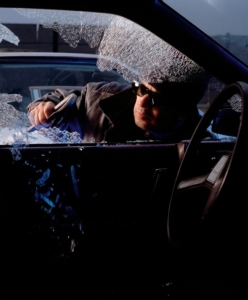 Subrogation is a word that not many recognize, but in the insurance world it is an important concept.
Subrogation is a word that not many recognize, but in the insurance world it is an important concept.
We’ve discussed two of the main first-party automobile insurance coverages: collision coverage and comprehensive coverage. To review, those kinds of auto insurance coverages pay you (or a repair facility) for damage to your insured car under the terms and in the amounts stated in the automobile insurance policy.
In a nutshell, collision coverage pays for repairs to the insured vehicle caused by a collision, while comprehensive coverage kicks in when physical damage occurs by other causes (like vandalism). Note, though, that comprehensive coverage does not cover all of the causes of damage that collision insurance does not cover. Look at the article on comprehensive coverage for a more complete explanation.
What is Subrogation?
Before we discuss some of the other common automobile insurance coverages, let’s talk about what often happens when an insurance company pays a collision or a comprehensive claim. It’s called subrogation. It is the process by which an insurance company tries to recover what it paid to you or on your behalf. Subrogation occurs in the context of many kinds of insurance, but it is easiest to explain in the context of automobile insurance.
Suppose that you have an automobile collision with a driver who was speeding and ran a red light in an intersection, colliding with your car. Barring strange circumstances (which would take too long to discuss here), the other driver would ordinarily be at fault for causing the collision.
If you had collision coverage on your car, your insurer would pay for the repair of the car although you would be responsible for the deductible. But, if your car is damaged beyond the reasonable cost of repair, your insurer would pay you the actual cash value of your car. That’s the value of your car just before the collision occurred. Just so you know, state law usually requires an insurance company to declare a vehicle a total loss if the cost of repair exceeds a stated percentage of its actual cash value.
Another example is if your windshield were broken by an act of vandalism. If you had comprehensive coverage (collision and comprehensive coverage usually go hand-in-hand), the automobile insurance company would pay for the replacement of the windshield. Interestingly, the law of many states prohibit insurers from applying a deductible to a windshield claim. This is because we don’t want to dissuade people from replacing damaged windshields because of the reduction in visibility resulting safety factors.
Let’s still assume that you were not at fault for any of the damage, but someone else was. Once your insurance company pays you or the repair facility, it succeeds to your rights to collect back from the at-fault party (or his/her/it’s) insurance company that which it paid to you or on your behalf. If you paid a deductible, your insurance company will usually try to recover it, too.
Subrogation is something you should be aware of when or if you’re in a collision. As a retired insurance attorney, I’m trying to be your best teacher about the complex world of insurance to ensure you have enough information to be smarter about insurance when the need arises. Be sure and click through my site for a variety of insurance topics that help you better understand. And, at the end of your search if you’re still confused The Insurance Problem Solver can further help clarify.

[…] Home/Auto Insurance Tips/More On Subrogation iframe { visibility: hidden; opacity: 0; } Previous […]